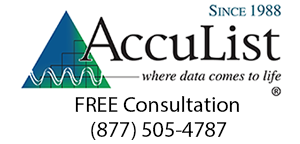On January 21, the U.S. Postal Service bumped up its rates for almost all mailings by direct marketers and publishers: Marketing Mail (formerly Standard Mail), First Class Mail Retail, First Class Mail Discount and Periodicals. What are some of the strategies to offset the effect on marketing budgets? Before panicking, mail marketers need to check out the whole USPS rate change grid. A 1% to 2% overall increase will be higher or lower depending on the class, weight, zone, density and special services required, and there are actually some savings to be had. For example, while the First Class stamp is going from $0.49 to $0.50 for a 1-ounce letter, a 2% bump, the USPS did not increase the additional ounce rate, so the percentage change gets smaller as items get larger. Meanwhile, metered letters are increasing from $.46 to $.47 in postage, which offers a significant savings of $0.03 per piece for those using a postage meter or PC postage, points out a recent Mailing Systems Technology post. Although most USPS discounts are tied to doing more work, such as barcoding or sorting, this metered rate savings is automatic for just using a system to print postage that costs as little as $20 per month, the article notes. There are other savings to be had via presorting, adds the Mailing Systems Technology article. For example, last year the USPS increased the weight limit for letter rates from 2 ounces to 3.5 ounces. Now, with the rate for a 3-ounce metered letter at $0.89 and a commercial rate of $0.378, there's a potential 58% savings from using presort services. Package changes can help the budget, too. Folding a flat (9x12 or 10x13) package into a 6x9 envelope could mean significant savings with the new rates. A three-ounce flat at $1.42 now could cost as little as $0.378 if it can be put in an envelope and automated through in-house software or presort services. Plus, mailers sending Priority Mail items at retail rates using Click-N-Ship or a postage meter can switch to a PC Postage solution using commercial rates to save 10% overall, or 2% to 40% less based on weight and zone. As data brokers, AccuList USA stresses that these postal cost changes also should push marketers to use data-driven direct mail in more strategic and creative multi-channel campaigns. To maximize mailing ROI, marketers should cut wasted mail by improving targeting, mailing list selection, and data/address quality, as well as apply response-boosting creative tactics, such as personalization and special printing effects. For rate tables and more advice, go to http://www.acculistusa.com/2018-usps-rate-hikes-challenge-direct-marketers/
David Kanter, President and CEO of AccuList, is a list brokerage and direct marketing expert. For more than 30 years, he has helped companies and nonprofit organizations achieve their marketing goals. With David's Direct Marketing Forum, he shares, and invites others to share, helpful direct-marketing industry news, trends, analyses, resources, and tips for success. Please read our Comment Policy.
Subscribe to:
Post Comments (Atom)

No comments:
Post a Comment